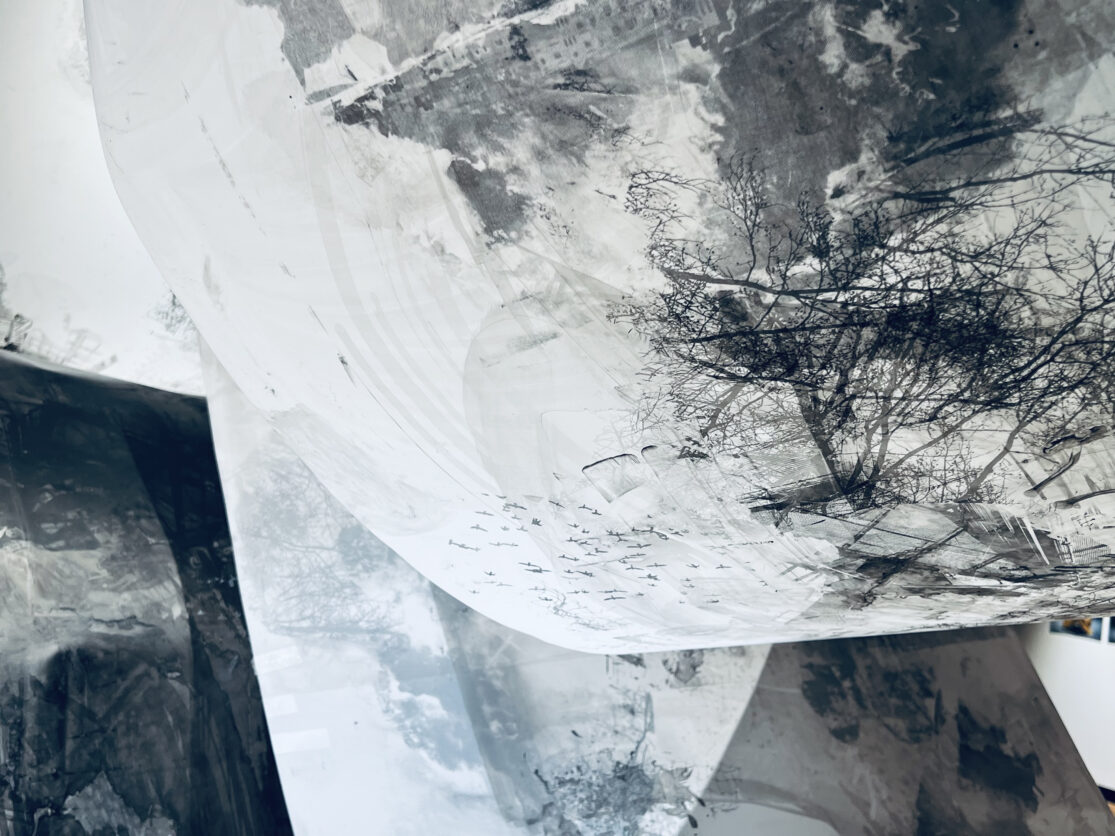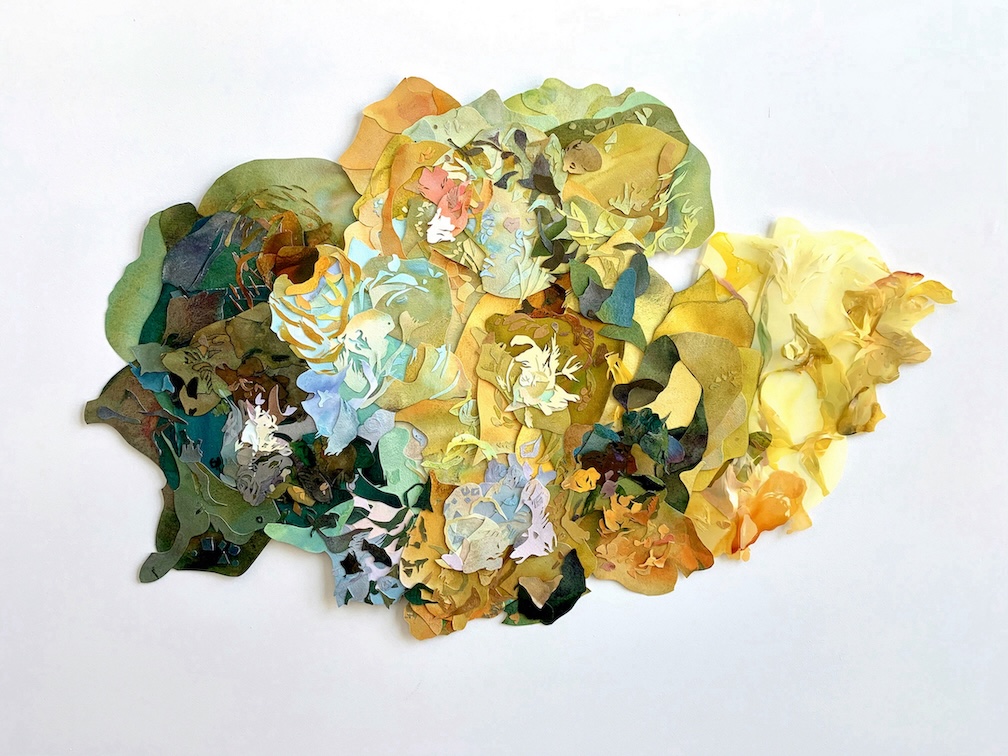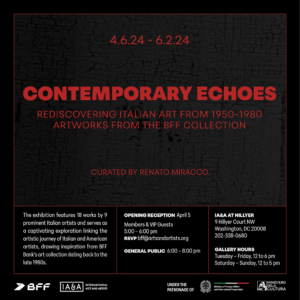Art and the Dialectic of Possibility
by Timothy Brown, Hillyer Director
Elaine Qiu, Kim Richards, and Alexandra Chiou are three solo artists who offer a dialectic of possibility when faced with difficult moments in life. Dialectics start with oppositions that can leave us at an impasse, but each artist finds a way to work through challenging situations by finding peace through personal and collective reflection, guidance when life is unbearable, and joy when overwhelmed by loss.

Elaine Qiu in her exhibition “Every Place We’ve Been” embraces the duality of personal and collective loss, using scrolls and overlapping narratives to unite us across boundaries, while providing space for visitors to grieve and interpret meaning in their own way. As the artist states:
“I create works not just to express but to connect. I am interested in exploring dichotomies, such as power and vulnerability, reality and fiction, rebirth and decay, mystery and conviction, belonging and displacement.”
The liminality of the in-between space that Qiu alludes to is an invitation for viewers to connect across time and space. Scrolls are hung from the ceiling in undulating patterns that make it difficult to determine where the story begins or ends. The binary framework of the personal and the collective is reflected in her use of translucent paper that is painted on both sides. The scrolls thus serve as intersections, spaces where “verso” and “recto” merge, but which are revealed as a shared space of infinite possibilities.
“I want to invite the visitors to reflect on the fluid and dynamic essence of time and identity, and discover that the past is not fixed but a narrative in constant revision.”
In her exhibition “Into the Wilderness,” Kim Richards identifies the universal human condition of hopelessness and/or “impossible situations” we find ourselves in, and offers Biblically inspired paintings to remind us that we are not alone—God is there to lead us and help us find peace.

Most of the paintings feature a solitary figure, a young African American woman (her daughter in real life), who at first appears lost, alone, or abandoned to her own thoughts. The viewer may sense that there is an opposition at work that separates the subject from her objective conditions—a state of mind that places her “in the wilderness.” Similar to the liminal space in Qiu’s work, Richards employs the use of symbol and metaphor to extend the narrative. For example, in her painting “Rest,” Richards includes a raven and a rotten bag of fruit. The raven represents God and the holy spirit, and the fruit serves as a metaphorical way of laying down our burdens. Through these juxtapositions, the solitary figure is guided beyond the finitude of her corporeal existence by the everlasting presence of the holy spirit. As the artist states:
“The paintings in this exhibition embody a narrative of being called by God to help us face the unexpected challenges that lie ahead, so that we can travel through the wilderness, restored and at peace.”
In her exhibition, “Remember/Renew,” Alexandra Chiou celebrates the life and legacy of her late father and her healing journey after his passing. The challenge for Chiou is giving material form to abstract ideas and feelings such as hope, love, joy, and wonder when confronted with an overwhelming sense of loss. The passing of her father was compounded by her family’s decision to move to another location, leaving behind cherished memories.

Through her intricate use of painted cut paper, assembled in complex layers, Chiou uses her art to work through loss and separation by recognizing the dual value of memories and nature. In her piece, “Rebirth,” Chiou recalls a moment in her father’s life when he immigrated to the United States from Taiwan. Recognizing the fluid, boundless, and courageous nature of her father’s migratory experience, Chiou sought in this work to capture movement and transformation. Similar to Richards’s quest for peace, Chiou finds tranquility in the resuscitation of memories and their realization through nature-inspired, abstract forms. As the artist states:
“I hope that viewers can come here and find a sense of healing and a sense of stillness. Also I hope that viewers just remember to be kind to themselves and to celebrate life and all the small moments, big moments, and everything in between.”
The artwork by Elaine Qiu, Kim Richards, and Alexandra Chiou offers a dialectic of possibility that transcends trauma, loss, and abandonment. Through their art, viewers discover peace and beauty amid the “wilderness” that is encountered in our personal and collective experiences.
Newly Selected Artists: Elaine Qiu, Kim Richards, and Alex Chiou
March 2–March 31, 2024


